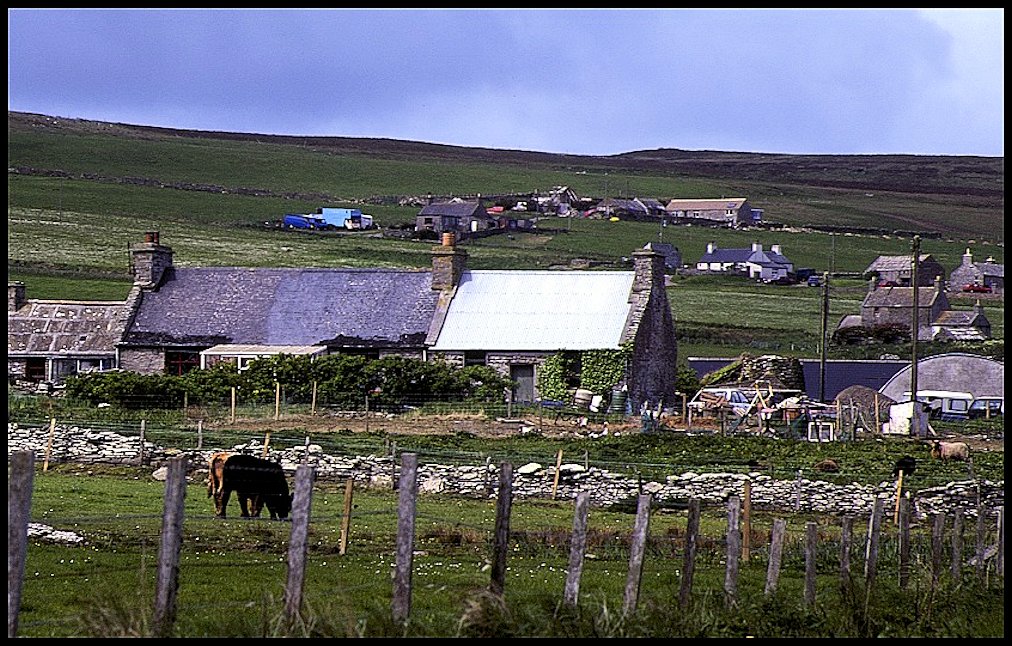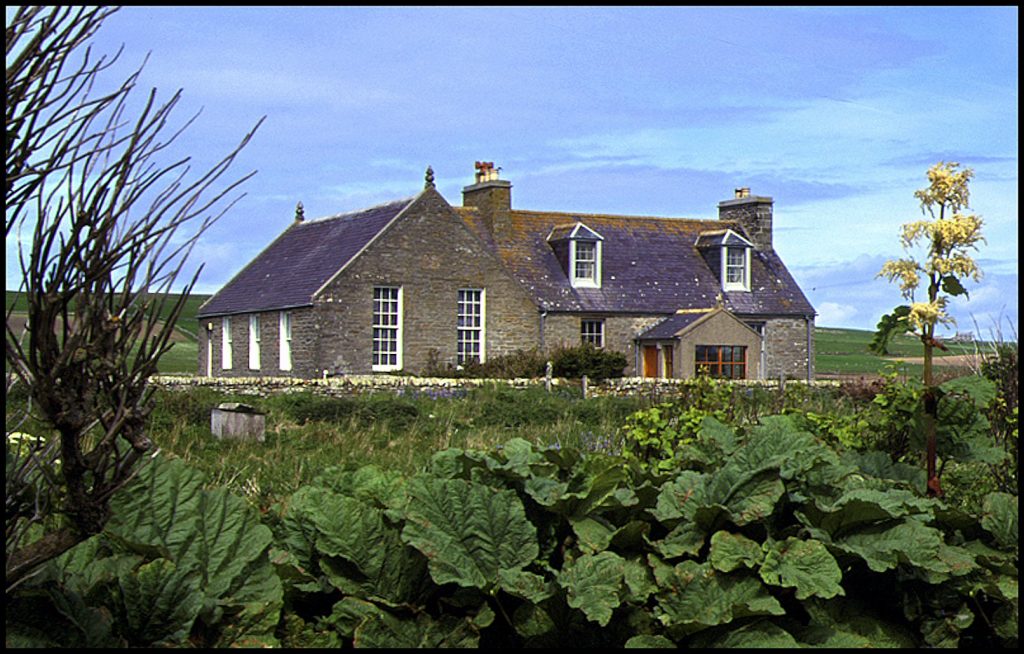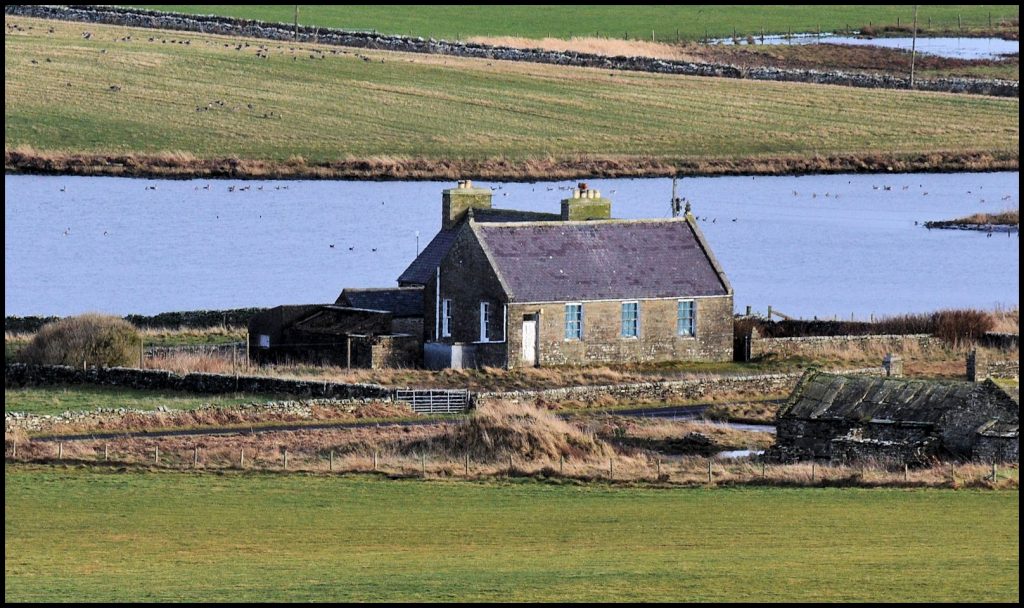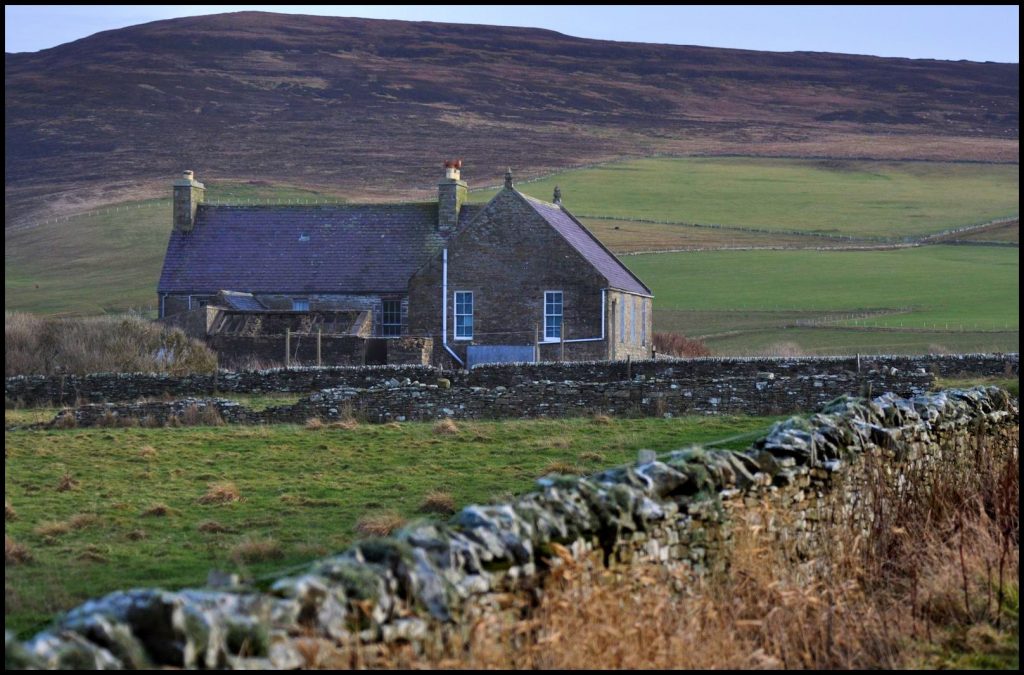The original school in Wasbister was known as the Free Kirk School. Rousay minister, the Reverend George Ritchie, was one of those who ‘came out’ along with almost the whole of his congregation in the Disruption of 1843 – a schism within the established Church of Scotland in which 450 ministers of the Church broke away over the issue of the Church’s relationship with the State, to form the Free Church of Scotland. It came at the end of a bitter conflict within the established Church, and had huge effects not only within the Church, but also upon Scottish civic life.
Education throughout Scotland benefited greatly from this development because within a few years the Free Church had opened 500 new schools, many of them in districts where no schools had previously existed.
Just two years after it came into being, the Rousay Free Kirk, under the Rev Ritchie’s leadership, was granted an acre of land at Feolquoy in Wasbister on which to build a school. The land was gifted by George W. Searle who, along with a fellow landowner, Thomas Dundas, 2nd Earl of Zetland, also contributed £5 per annum towards the teacher’s salary. Shortly afterwards, the school and adjoining schoolhouse were built, and the first teacher, William Linklater from Stronsay, was appointed.
Following a dispute over money which he alleged was owed to him by the Deacon’s Court of the Church Linklater resigned in 1862. He was succeeded by James Campbell Bruce from Glasgow who was given £1 to cover his travelling expenses to Rousay. He remained in the post for nine years, leaving when parents began to complain to the church authorities about the way he was running the school. [Mr Bruce subsequently opened a grocer’s shop in Victoria Street, Kirkwall]. Local divinity student, William M. Craigie of Cogar, took over temporarily until the appointment of William McKay in 1871. Then, two years later, the Free Kirk School in Wasbister was taken over by the Rousay School Board. General Burroughs, who owned almost all the island, was the chairman of the Board, the other members being James Sinclair of Newhouse and the three local ministers, the Rev. James Gardner of the Established Church, the Rev. John McLellan of the United Presbyterian Church, and the Rev. Neil Patrick Rose of the Free Church.
By 1881, William McKay he had been replaced by 30-year-old schoolmaster William Cooper. He lived at the schoolhouse with his wife Mary Jane Gibson, daughter of John and Jane Gibson of Langskaill, who was born on April 14th 1855. Over the years William and Mary Jane had seven children, the youngest of whom, Anna May, was a teacher at the school 30 years after her father.
A new school in Wasbister was officially opened by General Burroughs on November 1st 1881. Designed and built by Alexander Gibson of Vacquoy at a cost of £495, the Rousay School Board was pleased with it, there being ‘nothing to match it in Orkney or any rural area.’ To mark the occasion, Mrs Burroughs made a gift of fruit and a bun to each child.
Although William Cooper was regarded as a good teacher, he was dismissed when he fell out of favour, at a personal level, with members of the School Board in the late summer of 1886.
When the census of 1891 was carried out 24-year-old teacher William Horne from South Ronaldsay lived in the Wasbister schoolhouse with his 55-year-old mother Mary.
At this time the Old Schoolhouse was occupied by the Craigie family. 24-year-old Hugh Craigie was a carpenter and joiner by trade and he was married to Margaret Inkster of Upper Cogar. They eventually had five children, Maggie Jessie, Mary Jane, James Campbell Bruce, Hugh Gibson, and Barbara. The family later moved up the hill to Turbitail and from there across to Deithe.
Living in the Upper Schoolhouse was 70-year-old widower William Craigie. William was a fisherman and in his younger days he worked for the Hudson Bay Company. On his return to Rousay he married Margaret Inkster of Cogar in 1853, and with his savings he set up a shop there. Between 1854 and 1875 they had seven children, the oldest of whom, William M. Craigie, who was a minister, died at sea at the age of 24. Margaret died in 1876, and the shop was later transferred to the Old School, later re-named Ivybank. William lived there in 1891 with his 61-year-old sister Mary, a spinster, who was housekeeper, his son James G. Craigie, who was then a 28-year-old fisherman and Clerk to the School Board, 25 year-old daughter Mary, and youngest son Hugh, who was then a 16-year-old pupil teacher at the new Wasbister school.
James G. Craigie, who was born in 1863, married Annabella Chalmers in 1900, the daughter of James Chalmers and Ann Flaws of Stronsay. They had three children; Annie Flaws, who was born on February 21st 1901; William Marwick, on April 18th 1902; and Margaret F. (Rita), who was born on July 5th 1908. After the death of his father James ran the shop at Ivybank and as well as being Clerk to the School Board he was also Clerk of the Parish Council and Inspector of Poor. Daughter Annie was the teacher in Wasbister for a few years in the early 1920s before marrying George Scarth of Kirkwall and emigrating to Canada.
[Reference was made to Robert C. Marwick’s book From My Rousay Schoolbag]



